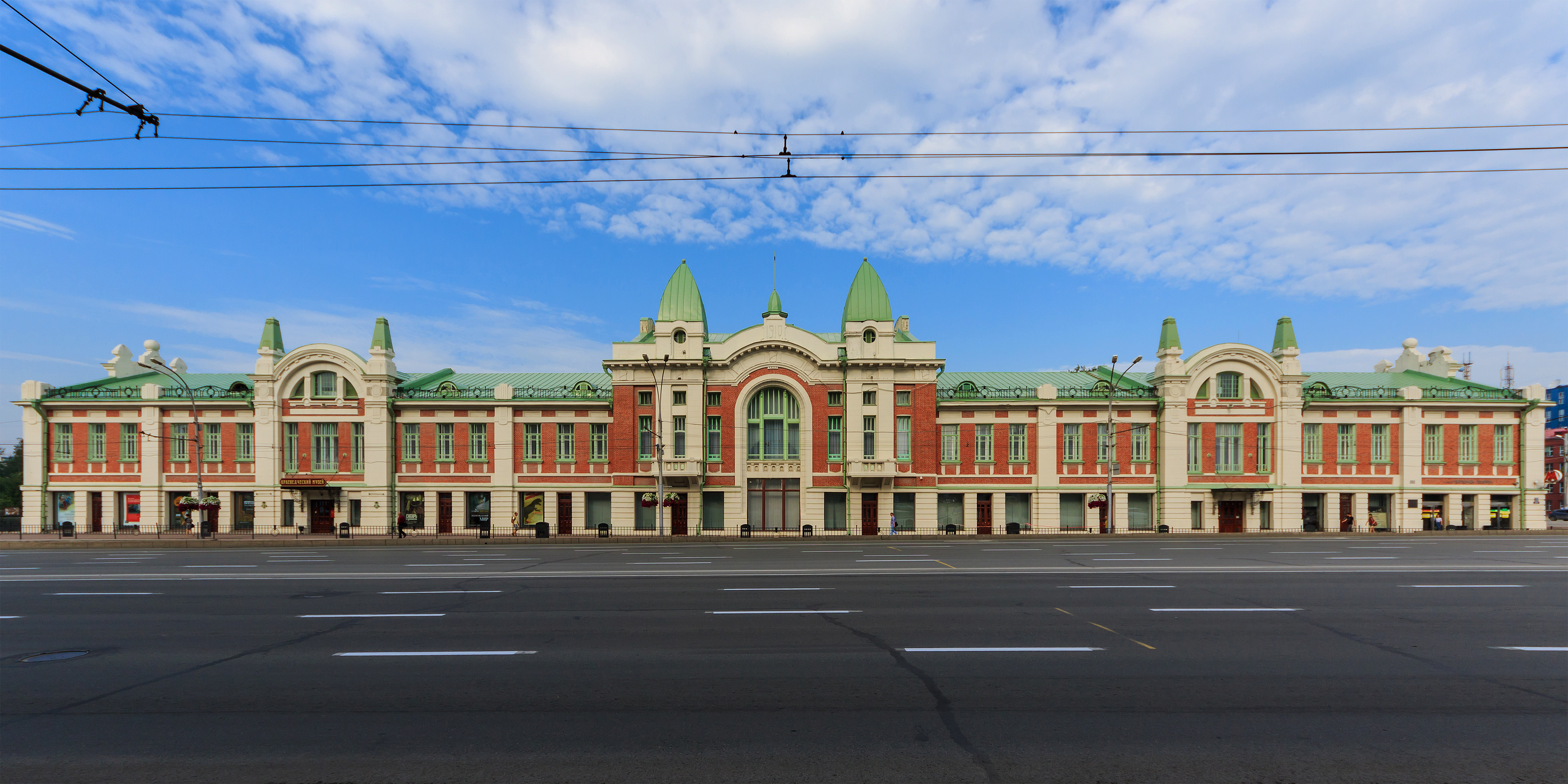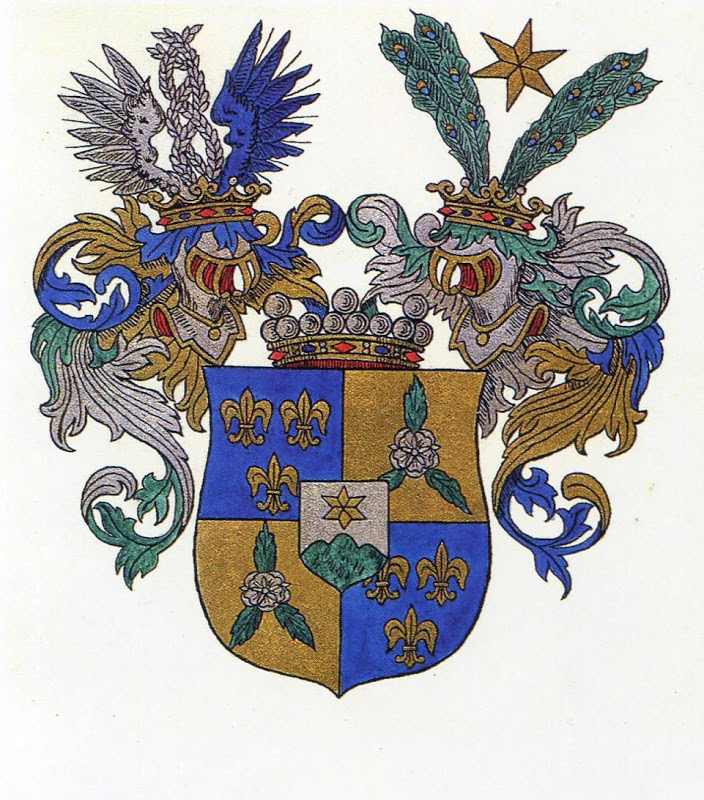|
Sverdlov Street, Novosibirsk
Sverdlov Street (russian: Улица Свердлова) is an east–west street between Viktor Vashchuk Proyezd and Serebrennikovskaya Street in Zheleznodorozhny and Tsentralny districts of Novosibirsk, Russia. The street crosses Sovetskaya Street and Krasny Avenue. History The street was previously called the Vorontsovskaya Street, but was renamed in 1920. Architecture * Mashtakov House is a house built in 1903. Baron Ungern may have been executed in this building. * Sibrevcom Building is a building designed by Andrey Kryachkov. It was built in 1926. File:Mashtakov House, Novosibirsk 01.jpg, Mashtakov House File:Художественный музей, арт-цоколь, ул. Свердлова, 10.jpg, Sibrevcom Building The Novosibirsk State Art Museum is a museum in Tsentralny City District of Novosibirsk, Russia. The building was designed by architect Andrey Kryachkov. History The Sibrevcom Building was built in 1926. The building was designed by architect A ... [...More Info...] [...Related Items...] OR: [Wikipedia] [Google] [Baidu] |
Novosibirsk
Novosibirsk (, also ; rus, Новосиби́рск, p=nəvəsʲɪˈbʲirsk, a=ru-Новосибирск.ogg) is the largest city and administrative centre of Novosibirsk Oblast and Siberian Federal District in Russia. As of the 2021 Census, it had a population of 1,633,595, making it the most populous city in Siberia and the third-most populous city in Russia. The city is located in southwestern Siberia, on the banks of the Ob River. Novosibirsk was founded in 1893 on the Ob River crossing point of the future Trans-Siberian Railway, where the Novosibirsk Rail Bridge was constructed. Originally named Novonikolayevsk ("New Nicholas") in honor of Emperor Nicholas II, the city rapidly grew into a major transport, commercial, and industrial hub. Novosibirsk was ravaged by the Russian Civil War but recovered during the early Soviet period and gained its present name, Novosibirsk ("New Siberia"), in 1926. Under the leadership of Joseph Stalin, Novosibirsk became one of the large ... [...More Info...] [...Related Items...] OR: [Wikipedia] [Google] [Baidu] |
Russia
Russia (, , ), or the Russian Federation, is a transcontinental country spanning Eastern Europe and Northern Asia. It is the largest country in the world, with its internationally recognised territory covering , and encompassing one-eighth of Earth's inhabitable landmass. Russia extends across eleven time zones and shares land boundaries with fourteen countries, more than any other country but China. It is the world's ninth-most populous country and Europe's most populous country, with a population of 146 million people. The country's capital and largest city is Moscow, the largest city entirely within Europe. Saint Petersburg is Russia's cultural centre and second-largest city. Other major urban areas include Novosibirsk, Yekaterinburg, Nizhny Novgorod, and Kazan. The East Slavs emerged as a recognisable group in Europe between the 3rd and 8th centuries CE. Kievan Rus' arose as a state in the 9th century, and in 988, it adopted Orthodox Christianity from the ... [...More Info...] [...Related Items...] OR: [Wikipedia] [Google] [Baidu] |
Serebrennikovskaya Street, Novosibirsk
Serebrennikovskaya Street (russian: Серебренниковская улица) is a street in Tsentralny City District of Novosibirsk, Russia. It runs south-north. The street starts from the Altay Railway Overpass and ends near the southern facade of the Novosibirsk Opera and Ballet Theatre. History The street was first called the Alexandrovskaya Street, but was renamed in 1920 for Fyodor Serebrennikov, Russian revolutionary. Gallery File:Serebrennikovskaya Street, Novosibirsk 05.jpg, Altay Railway Overpass, The Street Beginning File:Serebrennikovskaya Street, Novosibirsk 02.jpg File:Serebrennikovskaya Street, Novosibirsk 03.jpg, File:Bar club Guevara in Novosibirsk.jpg, Serebrennikovskaya Street in 2013 Architecture * Revenue House is a house built in 1910s. * School No. 12 is an educational institution, opened in 1912. Architect: Andrey Kryachkov. * Polyclinic No. 1 is a 1928 constructivist building designed by P. Shyokin. * NKVD House (Serebrennikovskaya Street 16 ... [...More Info...] [...Related Items...] OR: [Wikipedia] [Google] [Baidu] |
Zheleznodorozhny City District, Novosibirsk
Zheleznodorozhny District (russian: Железнодорожный район) is an administrative district (raion) of Central Okrug, one of the 10 raions of Novosibirsk, Russia. The area of the district is 8.3 sq km (2.5 sq mi). Population: 64 972 (2017). History The first houses were built here in 1893. At first, the district was named Vokzalnaya Chast. In 1895 the Resettlement Center was established. Kaganovichesky District was formed in 1936. Novosibirsk Glavny Railway Station built in 1939. In 1957 the Kaganovichesky District was renamed the Zheleznodorozhny District. Streets Улица Ленина, Новосибирск 1.jpg, Lenin Street Проспект Димитрова, Новосибирск 10.jpg, Dimitrov Prospekt Vladimirovskaya Street, Novosibirsk 1.jpg, Vladimirovskaya Street Улица Салтыкова-Щедрина, Новосибирск 1.jpg, Saltykov-Shchedrin Street World Class, health club 01.jpg, Gorky Street Улица Чаплыги� ... [...More Info...] [...Related Items...] OR: [Wikipedia] [Google] [Baidu] |
Tsentralny City District, Novosibirsk
Tsentralny District (russian: Центральный район) is an administrative district (raion) of Central Okrug, one of the 10 raions of Novosibirsk, Russia. The area of the district is 6.4 sq km (2.5 sq mi). Population: 78 794 (2017). History Tsentralny City District was established in 1940. Streets File:Красный проспект, Новосибирск 10.jpg, Krasny Avenue File:Serebrennikovskaya Street, Novosibirsk 01.jpg, Serebrennikovskaya Street File:Улица Депутатская (Новосибирск) 8.jpg, Deputatskaya Street File:Улица Фрунзе, Новосибирск 02.jpg, Frunze Street File:Улица Гоголя, Новосибирск 02.jpg, Gogol Street Architecture Imperial Russia File:Novosibirsk KrasnyPr Trade House 07-2016 img2.jpg, City Trade House File:Улица Потанинская 10а, Новосибирск 01.jpg File:Красный проспект 12, Новосибирск 02.jpg File:Дом купца П.М ... [...More Info...] [...Related Items...] OR: [Wikipedia] [Google] [Baidu] |
Sovetskaya Street, Novosibirsk
Sovetskaya Street (russian: Советская улица) is a street in Novosibirsk, Russia. It branches off from Krasny Avenue near the Alexander Nevsky Cathedral and then runs north parallel to it. Sovetskaya Street ends at the intersection with Zheleznodorozhnaya and Pisarev streets. Sovetskaya Street is the border between the Tsentralny and Zheleznodorozhny districts of the city. History The street was previously called the Kabinetskaya Street. Architecture Residential and public buildings * Vagin House is a building on the corner of Sovetskaya and Kommunisticheskaya Street. It was built in 1903. * Kryukov House is a building on the corner of Sovetskaya and Gorky streets. It was built in 1908 by merchant Kryukov. * City School Building. It was built in 1912. Architect: Andrey Kryachkov. * Main Post Office is a building on the corner of Sovetskaya and Lenin Vladimir Ilyich Ulyanov. ( 1870 – 21 January 1924), better known as Vladimir Lenin,. was a Russia ... [...More Info...] [...Related Items...] OR: [Wikipedia] [Google] [Baidu] |
Krasny Avenue
Krasny Prospekt (russian: Красный проспект) or Krasny Avenue is the central street and major thoroughfare in the city of Novosibirsk, Russia. Its length is about 7 km. It runs across the central part of the city starting from the right bank of the Ob River and terminates in the vicinity of Severny Airport. The main square of Novosibirsk - Lenin Square - is a part of Krasny prospekt, as well as Sverdlov and Kalinin squares. Buildings and structures Odd side of the street * No. 1а – Alexander Nevsky Cathedral (1899) * No. 1 – Zapsibzoloto Building (1930–1932, A. I. Bobrov; 1936, architect: V. M. Teitel) * No. 3 – The School of the House of Romanov (1911–1912, A. D. Kryachkov, K. M. Lukashevsky; 1928–1932, K. E. Osipov, A. I. Bobrov) * No. 5 - Novosibirsk State Art Museum * No. 9 – Mashtakov House (1903) * No. 11 – Kraisnabsbyt Building (1931–1934, B. A. Gordeev, S. P. Turgenev, N. V. Nikitin) * No. 13 – Sibstroyputi Building (1932, I ... [...More Info...] [...Related Items...] OR: [Wikipedia] [Google] [Baidu] |
Roman Von Ungern-Sternberg
Nikolai Robert Maximilian Freiherr von Ungern-Sternberg (russian: link=no, Роман Фёдорович фон Унгерн-Штернберг, translit=Roman Fedorovich fon Ungern-Shternberg; 10 January 1886 – 15 September 1921), often referred to as Roman von Ungern-Sternberg or Baron Ungern, was an anticommunist general in the Russian Civil War and then an independent warlord who intervened in Mongolia against China. A part of the Russian Empire's Baltic German minority, Ungern was an ultraconservative monarchist who aspired to restore the Russian monarchy after the 1917 Russian Revolutions and to revive the Mongol Empire under the rule of the Bogd Khan. His attraction to Vajrayana Buddhism and his eccentric, often violent, treatment of enemies and his own men earned him the sobriquet "the Mad Baron" or "the Bloody Baron". In February 1921, at the head of the Asiatic Cavalry Division, Ungern expelled Chinese troops from Mongolia and restored the monarchic power of the Bog ... [...More Info...] [...Related Items...] OR: [Wikipedia] [Google] [Baidu] |
Novosibirsk State Art Museum
The Novosibirsk State Art Museum is a museum in Tsentralny City District of Novosibirsk, Russia. The building was designed by architect Andrey Kryachkov. History The Sibrevcom Building was built in 1926. The building was designed by architect Andrey Kryachkov. The Novosibirsk State Art Museum exhibits 70 classical and modern artwork annually with average or 150 thousand visitors. Gallery File:Художественный Музей, афиши.jpg File:Sibrevkom.jpg File:Inside Sibrevkom.JPG File:Novosibirsk State Art Museum.jpg File:Здание Художественного Музея, Сибревкома.jpg File:Красный проспект, 5, Новосибирск.jpg See also * Russian Museum * The Museum of Russian Art The Museum of Russian Art (TMORA), a nonprofit museum in Minneapolis, Minnesota, United States, is the only major institution in North America devoted entirely to Russian art and culture from the entire scope of Russia's history. The Museum was ... [...More Info...] [...Related Items...] OR: [Wikipedia] [Google] [Baidu] |
Andrey Kryachkov
, image = Крячков Андрей Дмитриевич.jpg , image_size = , alt = , caption = , birth_name = Andrey Dmitriyevich Kryachkov , birth_date = , birth_place = Vakhrevo, Rostovsky Uyezd, Yaroslavl Governorate, Russian Empire , death_date = , death_place = Sochi, Krasnodar Krai, RSFSR, Soviet Union , death_cause = , resting_place_coordinates = , nationality = → , fields = , workplaces = , patrons = , education = , alma_mater = St. Petersburg institute of civil engineering , thesis_title = , thesis_url = , thesis_year = , doctoral_advisor = , academic_advisors = , doctoral_students = , notable_students = , known_for = , influences = , influenced = , awards = , author_abbrev_bot = , author_abbrev_zoo = , spouse = , pa ... [...More Info...] [...Related Items...] OR: [Wikipedia] [Google] [Baidu] |


